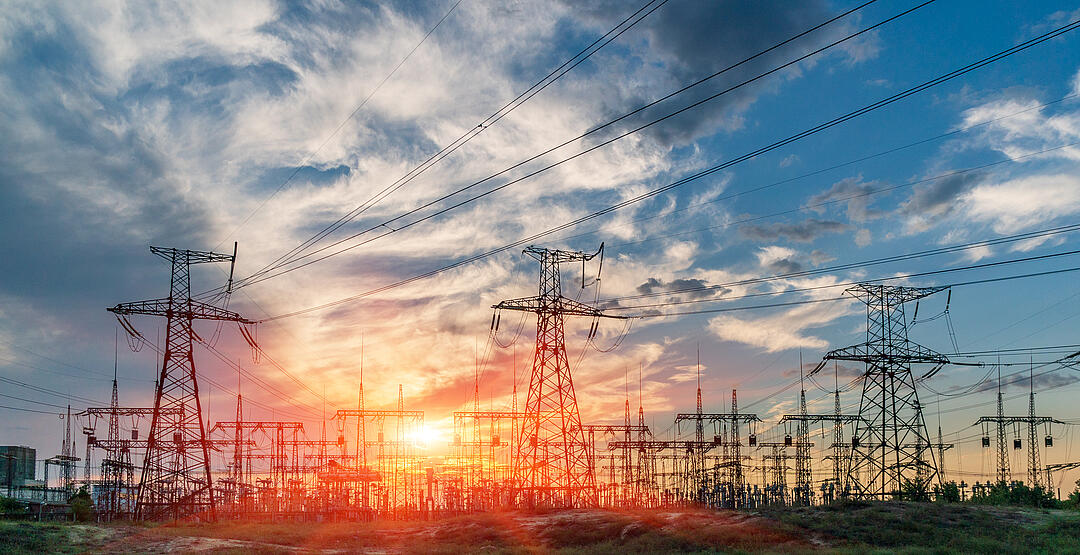Project developers, planners, and operators of renewable energy systems require a suitable grid connection point (GCP) to feed the generated energy into the electrical grid. The costs for the grid connection depend on the assigned connection point. Projects can become uneconomical if an unfavorable GCP is assigned and used. Therefore, it is worthwhile to consider all available options before and during the grid connection request process.

Comprehensive Consideration of Potential Grid Connection Points
Analyzing Options Pays Off
In January 2025, the Federal Network Agency published initial figures on the expansion of renewable energy systems [1]:
“The installed capacity of renewable energy systems increased by nearly 20 gigawatts to a total capacity of just under 190 gigawatts. Compared to the previous year, this represents an increase of 12 percent. The main contributors to this development are the energy sources solar and wind.”
In addition to wind and photovoltaic systems (WEA and PVA), significant battery storage capacities and performances are also currently being planned [2].
Grid operators face the challenge of integrating electrical energy from this growing number of decentralized systems into their grids while maintaining grid stability. In response, electrical grids are currently being expanded in many regions across Germany. This planned grid expansion can take several years.
More about our Photovoltaic Services and Onshore Wind Energy:
What Does the Reality Look Like for Stakeholders?
Project stakeholders aim to:
- Obtain a binding grid connection point (GCP) at an early stage to increase planning security for their projects, and
- Establish the technical connection (grid connection) in a cost-effective manner.
Long before the realization of the technical connection, stakeholders must request a grid connection point from the grid operator so that a grid compatibility assessment can be carried out. At the end of this assessment, the grid operator assigns a GCP to the stakeholder.
In addition to the number of approved projects, the rated capacities of wind energy systems (WEAs) are also increasing. Rated capacities of 6–7 megawatts per WEA are no longer uncommon. Even with just two WEAs with rated capacities above 6 MW, full grid feed-in at a medium-voltage connection point is no longer possible in some cases.
If a high-voltage GCP is then requested and assigned, it should be noted that building a dedicated substation can involve significant investment costs and long lead times. Long distances that must be bridged with cable routes can also drive up project costs. Thus, the costs of the grid connection heavily depend on the assigned GCP.
For these reasons, it is advisable to engage early and holistically with the various grid connection possibilities.
More about our Grid Connection Planning:
What Does a Comprehensive Approach Look Like?
Analyzing Grid Connection Options
Various services (e.g., power grid maps) available online show the existing cable and overhead line routes of grid operators. In addition, grid operators regularly publish their planned grid expansion measures. Non-binding daily statements—which can be obtained via phone, email, or now also through online connection checks—provide initial guidance for identifying potential grid connection points. This allows grid connection costs to be reliably estimated even in the early phases of a project for profitability analyses.
Applying for Grid Connection with Preparation
Due to the large number of both binding and non-binding grid connection requests, grid operators expect a sufficient and well-prepared data basis. In this context, the term “seriousness” is often used. Take the time to prepare these documents and the corresponding application forms thoroughly. Check how the grid operator expects to receive applications and which attachments are required in order for a grid connection point to be assigned. Try to find out whether and how long the connection offers or reservations are valid, and which proofs must be submitted in order to extend them.
Examining Flexible Grid Connection Agreements
The assigned grid connection point may be unfavorable from the project developer’s perspective. Significant distances for the cable route or the connection of a seemingly low plant capacity at the high-voltage level can make a project appear uneconomical. With the recent revision of the Renewable Energy Sources Act (EEG), including § 8a EEG 2023, the possibility for flexible grid connection agreements was introduced. Within this framework, project developers and grid operators can agree on a connection point that takes both parties’ interests into account. For example, it can be agreed that the grid connection capacity is limited—either permanently or temporarily—below the installed capacity of the plant. In this way, today’s limited grid connection capacities can be optimally utilized.
Utilizing Synergy Effects
In addition to “overbuilding GCPs,” the flexible grid connection agreement also allows for so-called “cable pooling”—the combination of different types of generation and storage systems at a shared GCP—without the need to change grid dimensions. For example, the highly complementary generation profiles of wind (WEA) and solar (PV) systems can be combined. In the vicinity of planned projects, it is highly likely that grid infrastructure such as substations have already been or are being planned, constructed, and operated. In such cases, it is advisable to contact other project developers and operators to discuss the potential for joint use of the existing infrastructure.
More about our Services in the Field of Sector Coupling:
[1] https://www.bundesnetzagentur.de/SharedDocs/Pressemitteilungen/DE/2025/20250108_EE.html, accessed on 17.03.2025
[2] https://www.pv-magazine.de/2025/01/13/uebertragungsnetzbetreibern-liegen-zum-jahreswechsel-650-anschlussanfragen-fuer-grosse-batteriespeicher-mit-226-gigawatt-vor/, accessed on 17.03.2025
Your Contacts
-

Mitja Klatt
Project Engineer Energy Systems
-

Ole Dammann
Head of Energy Systems